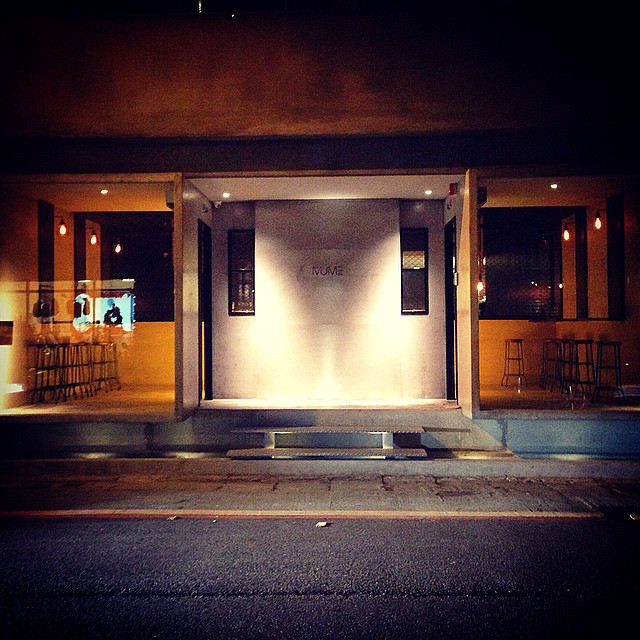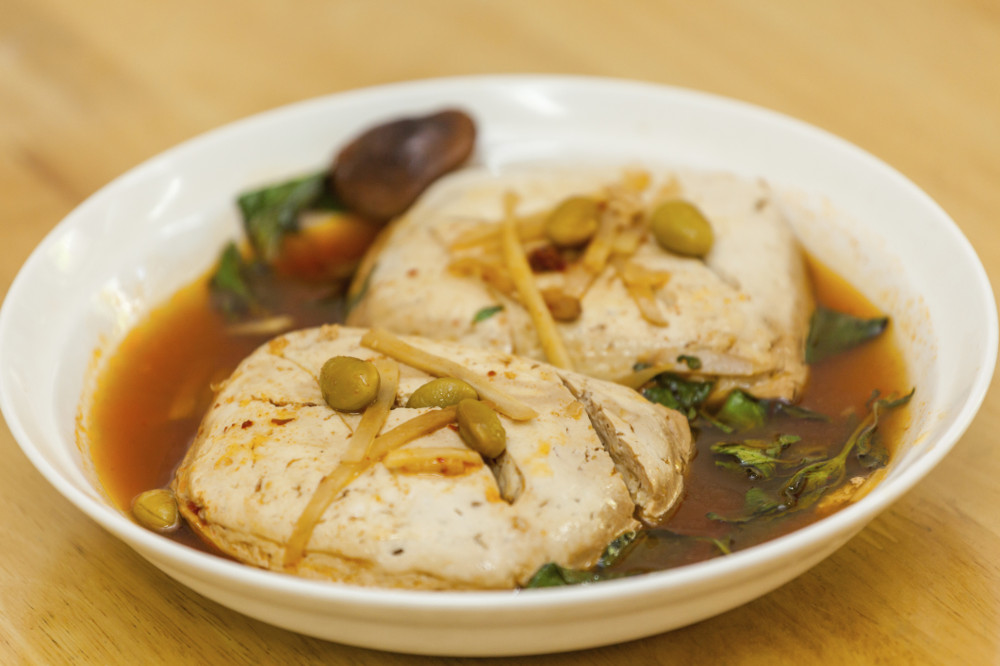Pungent slices of fermented tofu, piping hot pork buns and crisp green guava slices are some of Taiwan's classic street eats, with the best stalls attracting queues of locals and visitors. Now these no-frills favourites are being joined by a new wave of restaurants tapping in to this island in Asia's abundant fresh produce and vibrant cuisine.
Their fusion of seasonal menus and slick interiors at modest prices is starting to create an international buzz – Conde Nast Traveller magazine has labelled Taiwan the 'foodie destination of 2015'. The island's star chef, Andre Chiang – who trained in France and runs the acclaimed Restaurant Andre in Singapore – recently opened his first venue on home turf, RAW, in northern Taipei.
Taipei in Taiwan, which has been dubbed 'foodie destination of 2015'. Picture: Getty Images
It serves up seasonal Taiwanese produce crafted into what Chiang calls a "new interpretation" of the island's culinary traditions. "They are all humble ingredients – but when you start to match them in a different way, you create something interesting," he said.
RAW's seven-course menu changes every month and features 21 Taiwanese ingredients in peak season at the time. Tiny shrimp nestle inside purple rice crackers; three types of cauliflower are layered on to thin wafers of chicken skin; a version of the island's famed sweet treat, the pineapple cake, is presented as three semi-frozen cubes.
The full tasting menu costs Tw$1,850 ($A80), which Chiang calls "accessible" compared with the island's expensive fine-dining options, mostly the preserve of high-end hotels.
Hop over to Honkers for some more Asian dishes: 5 Must Eats In Hong Kong
Add dance to your dining experience: Not-To-Miss Thailand Dinner Shows
Brand Taiwan
RAW, which opened in December, is part of 38-year-old Chiang's mission to help carve out a fresh global identity for Taiwan.
"We used to be Taiwanese, with aboriginal local cuisine, then we were colonised for 50 years by the Japanese, then there was the takeover by the Chinese (nationalist) government. We can't cut (those influences) out of our history."
Now entrepreneurial restaurateurs are finding their feet, and it's not just about the food.
"Small independent restaurants ... are starting to take Taiwanese local produce and are doing it in a more international way, with both the cuisine and the design," Chiang said.
The cavernous space at RAW, designed by Dutch architect Camiel Weijenberg, is dominated by two huge curved wooden counters made from Taiwanese spruce by local artisans.
The city's growing reputation for creativity led Taipei to be named World Design Capital for 2016 by the International Council of the Societies of Industrial Design.
"People have studied abroad and are bringing ideas back with them – a lot has changed in the last year or two ... there's a big transition at the moment," Weijenberg said.
Mume creates Western dishes from traditional produce. Picture: Mume
At new restaurant Mume, three young chefs use Taiwanese produce to create Western dishes in a bid to fill the gap between simple island fare and pricey fine dining. The cosy, 32-seat venue decked out in dark wood and storm lamps also opened in December, tucked away in a quiet street in Taipei's central Daan district.
"We're starting to get quite a lot of international travellers, probably 20 to 30 per cent," said Hong Kong-born founder and chef Richie Lin, 34, who works with Australian chef Kai Ward, 24, and US chef Long Xiong, 32.
Mume serves up plates designed for sharing, from grilled pork neck and Wagyu beef tartare to squid, clams, and roasted romanesco broccoli, with an average spend of around Tw$2,000 ($A87). Desserts include an orange sorbet in an edible candied peel shell, designed to show off the best of Taiwanese citrus.
"As chefs we all like to use sustainable products that belong to the place," said Lin, adding that 90 per cent of ingredients on the menu are local.
Book your next dream holiday with Travel Associates
Old-School Favourites
But as the food and design scene evolves, Taiwan's old-school street eats remain a must-try. At Raohe night market in eastern Taipei, the queue at one family-run pork bun stall snakes down the road.
It has been serving up baked flaky pastry pockets filled with spicy pork – known as 'hu jiao bing' or pepper cakes' – for more than 20 years.
"The pork is mixed with 10 Chinese herbs," said cook Yang Rui-fu, 38, whose sister set up the stall. "It originally came from China, from Xiamen, but we have adapted it. The pastry is more flexible and chewy and the herbs make the taste fresher."
The pastry buns sell for Tw$50 ($A2.20), with about 1,800 customers throughout the afternoon and evening.
Along with pork buns, fermented tofu is a classic Taiwanese street dish. Picture: Getty Images
Yang, who mans the stall's charcoal ovens, says that with Taiwanese chefs travelling abroad and more tourists coming to the island, its cuisine is starting to earn a wider reputation.
"When I was young, we only had Taiwanese customers, but there are now more people from European countries", as well as from across Asia, he said.
For French interns Simon Gosset, 24, and Keyvan Nybelen, 22, their month in Taiwan has been a culinary revelation.
"We've tried lots of different dishes: sausages, dumplings, pig's blood with rice, guava," Gosset said, as they browsed the Raohe stalls. "We really like the food here. We knew nothing about it before we came."















